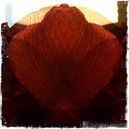ASSAY: A JOURNAL OF NONFICTION STUDIES
1.1
1.1
|
During the years 1968-1974, while the Troubles were brewing in Ireland, John McCarten submitted 21 “Irish Sketches” to the New Yorker magazine, though editor William Shawn published only six of the light but probing pieces on Irish art and culture. Nevertheless, all the “Sketches” are worth reading even today because McCarten satirized Irish stereotypes and went behind the scenes to get beyond the conventional images of the culture with a mature, well-crafted voice that he developed in Irish New York in the 1930s and 1940s while writing for the New Yorker. McCarten also wrote gently satirical fiction with snappy dialogue and brief Talk of the Town reportage—“Talk Stories”—that complemented the accurate but humorous voice created by the magazine’s early writers, such as E. B. White, James Thurber, Robert Benchley, Dorothy Parker and several others. McCarten also crafted memorable Profiles that demonstrated his abilities as a reporter, storyteller and irreverent critic of social and political figures and their actions. He later sharpened his critical acumen while reviewing movies and Broadway plays. By the time he moved to Ireland, he brought a mature voice and aesthetic to writing the “Irish Sketches.”
When I first read the “Irish Sketches” and first talked to McCarten’s son Hugh McCarten, who repeated his father’s complaints about how Shawn often postponed publication of writers’ work, I agreed with Hugh McCarten that Shawn had not published enough of his father’s “Irish Sketches.” Two years ago, I thought that Shawn could have used many more of the “Irish Sketches” to create a more complex image of Ireland during the Troubles. In the two years that have passed since my first trip to New York, more research and two more days of interviewing Hugh McCarten have brought me to some new insights. First, a review of what Shawn published regarding Ireland between 1968 and 1972, the years that McCarten was writing and submitting his “Irish Sketches,” reveals that Shawn was trying to project a balanced image of life in Ireland, and McCarten’s “Irish Sketches” were only a part of Shawn’s larger editorial canvas. Second, Hugh McCarten, having gone through many of his father's materials in the year between our two interviews, had come to the conclusion that his father’s “Irish Sketches” may have made the New Yorker seem too “bucolic” for the late 1960s and early 1970s.
|
After we had surveyed the Main Hall, Scott (his friend) guided me back to the anteroom, where I, being no archeologist, did my poor best to establish some sort of rapport with the carven rocks. I was studying an item called the Tanderagee Figure, a grotesque little object that was found in a bog near Newry, in County Down, and that may represent some mythical Celtic character, when a small girl came along. After staring for a while at the Tanderagee Figure, she bent over and kissed it tenderly. Scott, who was standing at my elbow, said, “The child of the Atomic Age sends her love to the Early Iron Age. What a lovely gesture (100). |
|
The two scenes described above demonstrate McCarten’s voice as a New Yorker writer. He tells the truth in gentle, mocking praise without savaging his subjects. What’s more, the gently ironic scene of the child kissing the Tanderagee Figure captures in one action the significance of Rosc 67, namely, the links between Ireland’s ancient and its contemporary cultures, particularly the visual resemblance between old and new works of art. Typical of McCarten, and of many New Yorker writers old and new, he makes serious points with light, ironic language and action.
Enthused by publication of his first “Irish Sketch,” McCarten submitted six more in 1968, all of which Shawn had set in galley proofs, but none of which he published. Shawn always bought more material than he could publish, as do many magazine editors, but it’s also important to recall that 1968 was a tumultuous year in the United States and in Ireland. Some Irish historians argue for 1968 as the beginning of the most recent spate of Troubles in Ireland and thus it is not surprising that McCarten’s reportage, that depicted Ireland as a progressive country with a long, strong tradition of art, culture and storytelling, made Shawn reluctant to publish his work. Secondly, McCarten’s “Sketches” do not fulfill one of the New Yorker’s original goals—to parallel the news. To fulfill this goal in the late 1960s and early 1970s meant reporting on innovations in art and culture, but more frequently it meant reporting on assassinations, riots, the War in Vietnam, the civil rights movement and other tumultuous events rather than the art and culture of Ireland. Nevertheless, McCarten’s six 1968 pieces were successful enough to be set in galley proof, but his first two submissions in 1969 were banked in manuscript. “The Mountain Tea of Connemara,” a report on poteen--illegally distilled liquor, and conflicts with tax collectors, and a second piece, “Fun and Games with Certain Exclusions,” about bans or restrictions on everything from birth control to English-style sports, considers the under-side of Irish culture. The glimpse at illegal activities and, ironically, the Irish eagerness to ban or outlaw even popular games such as soccer, offer insights on Irish society that would have been of interest to readers of the New Yorker because they were in marked contrast to the relaxing of political and social regulations in this country. In the 1960s and 1970s, U. S. high schools and colleges dropped dress codes and curfews, some states reduced the legal drinking age to eighteen or nineteen and, most importantly, the 26th Amendment lowered the voting age from twenty-one to eighteen in 1971. In short, the Irish interest in new rules and restrictions would have been an interesting curiosity for most Americans, whether of Irish or other heritage. McCarten must have been frustrated with Shawn, with eight pieces in the bank, six in galley proofs and two in manuscript. But then, much to McCarten’s pleasure, Shawn published an “Irish Sketch” subtitled “Kilkenny Without Any Irate Cats” in the February 22, 1969 issue, that year’s anniversary issue. Although Shawn did sometimes publish former regular contributors in the anniversary issues, his decision to publish “Kilkenny Without Any Irate Cats” is curious. If Shawn has been reluctant to publish McCarten’s “Irish Sketches” because of the Troubles in the North, he now publishes a piece that opens with a gentle mocking of the IRA. McCarten begins his piece by explaining how the IRA blew up a monument to the English naval warrior, Admiral Nelson. He describes the IRA as “an outfit mysteriously and mystically engaged in bringing about the unification of Northern and Southern Ireland by dynamiting statues and monuments hereabouts that memorialize Englishmen, and by attacking customhouses on the border between the North and the South” (95). Having dispensed with the IRA with mocking praise, he introduces a stage Irishman: “a tall, thin, sad-faced man who had an air of seedy gentility” who claims that his wife, “a sweet woman if ever there was one, has given birth to a lovely set of twins” (95). McCarten then admits to the reader that the mendicant had nicked him for five pounds with the same routine when he’d visited Dublin ten years ago. McCarten tells the sad-faced man that his material needs overhauling, but this doesn’t stop the panhandler. He entertains McCarten with a long monologue full of “it’s the truth I’m telling you now” about how the IRA blasted Nelson’s Pillar skyward and then one dark night stole the broken stones and buried them somewhere in County Kilkenny. McCarten gives the “old fraud” two pounds for the story (95). As the sketch progresses, McCarten leaves behind the stereotypical storyteller and rings up one of his Irish mentors who is a graduate of Kilkenny College, director of the Kilkenny Design Workshops, a Yeats scholar, and the former director of the Irish Export-Import Board. As McCarten enters the world of serious Irish culture, he steps back, reporting a few facts now and then to set up the expert’s testimonies throughout the rest of the profile (96-100), providing a multi-faceted approach. Following publication of “Kilkenny Without Any Irate Cats” in February 1969, McCarten submitted eleven more “Irish Sketches” before Shawn published “Confabulations in Kerry” on September 12, 1970 and “Après Cousin Charles” on October 31, 1970. In these and several other “Sketches,” McCarten introduces each piece with personal anecdotes and history to set the story in motion before taking up his accustomed position of reporter and observer. In most of the remaining “Irish Sketches,” McCarten first meets a stage Irishman or Irishwoman who supply myths, tales and folklore typical of what Americans expect from the Irish. After giving voice to this sector of Ireland, McCarten goes on to consult with educated, professional men and women who revise the myths, tales and folklore with facts, scholarly research or extensive observation and experience. Although both types of people come in for a little of McCarten’s gentle satire or mocking praise, it is in the contrast between the stage Irish and the experts that McCarten explores and dramatizes the richness of Irish society and culture. A Fuller Picture of Ireland:
|
Click here for a printable PDF with Works Cited.
|
Brian Nerney is Chair and Professor in the Communication, Writing and the Arts Department at Metropolitan State University, a leading institution for adult learners in St. Paul, Minnesota. An active member of the American Conference for Irish Studies, he writes about Irish-American families and how they are shaped by the stories they tell or deliberately withhold. His essay, "Stories from Down Cellar," first published in the New Hibernia Review, was chosen as one of the year's "notable essays" in Best American Essays, 2010, and reprinted in Extended Family: Essays on Being Irish American from New Hibernia Review.
|
Related Works
|
Colleen Hennessy
Irish Motherhood in Irish Nonfiction: Abortion and Agency Assay 7.1 (Fall 2020) |

